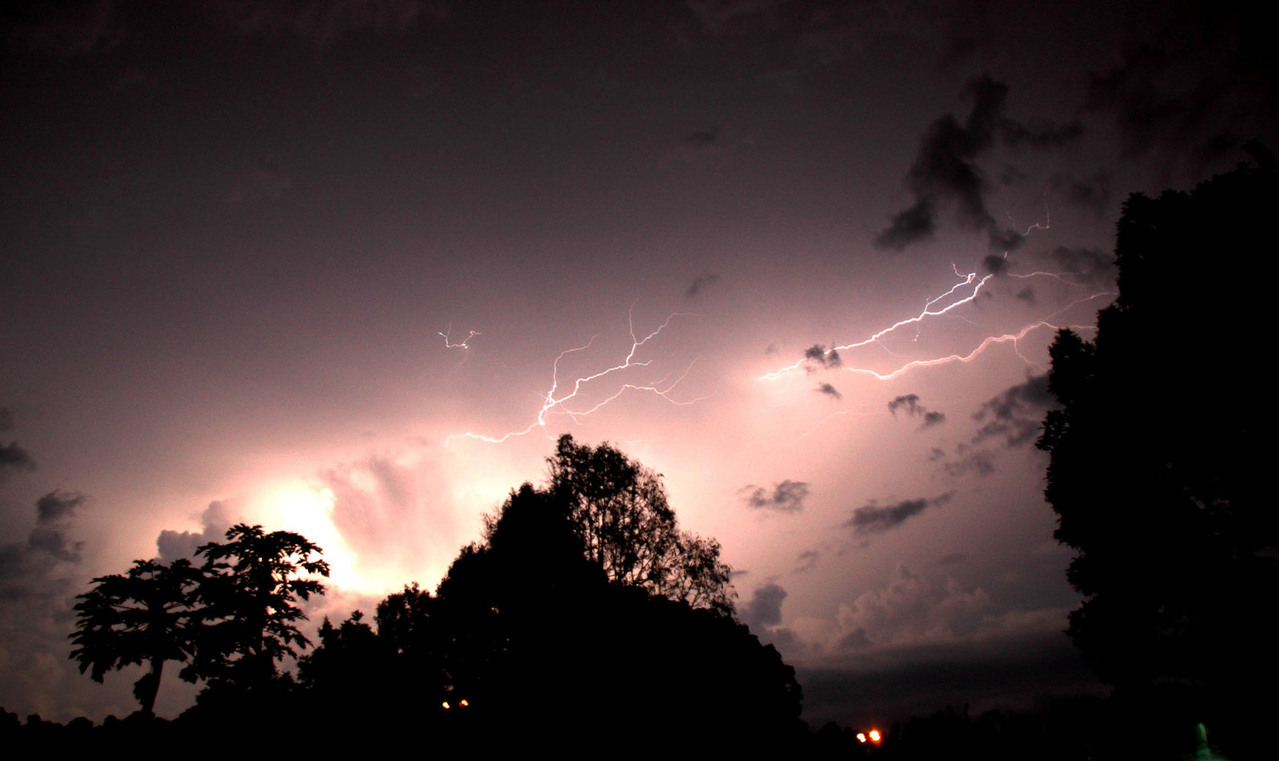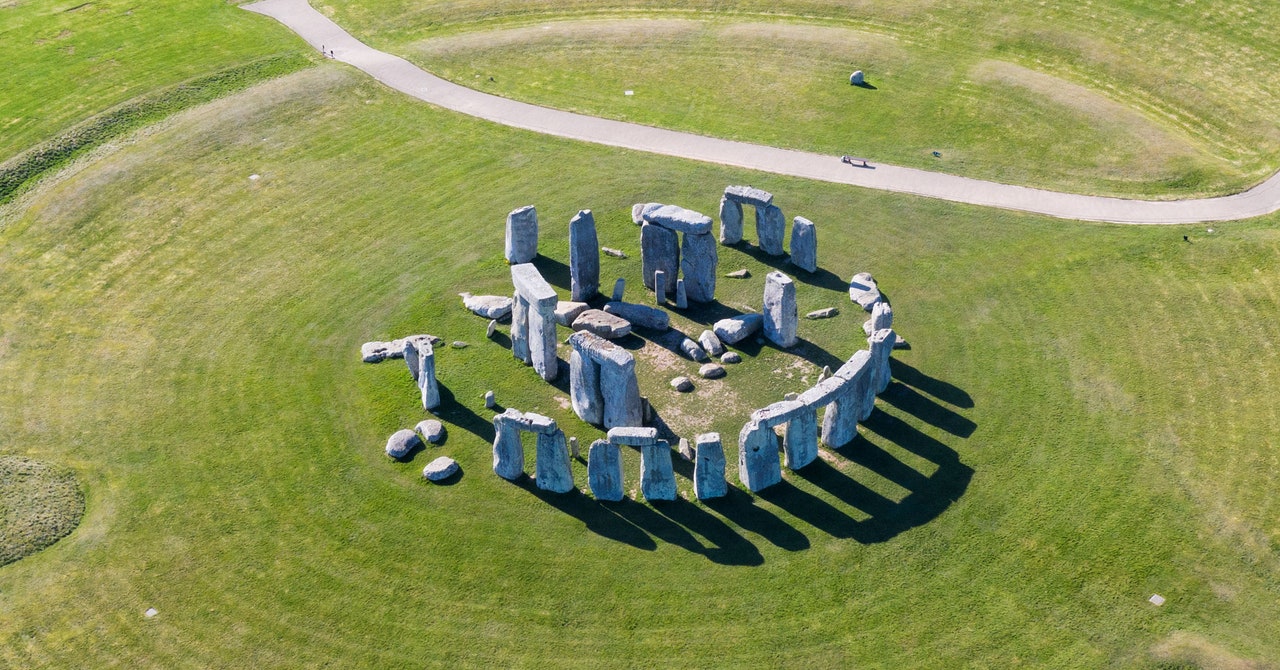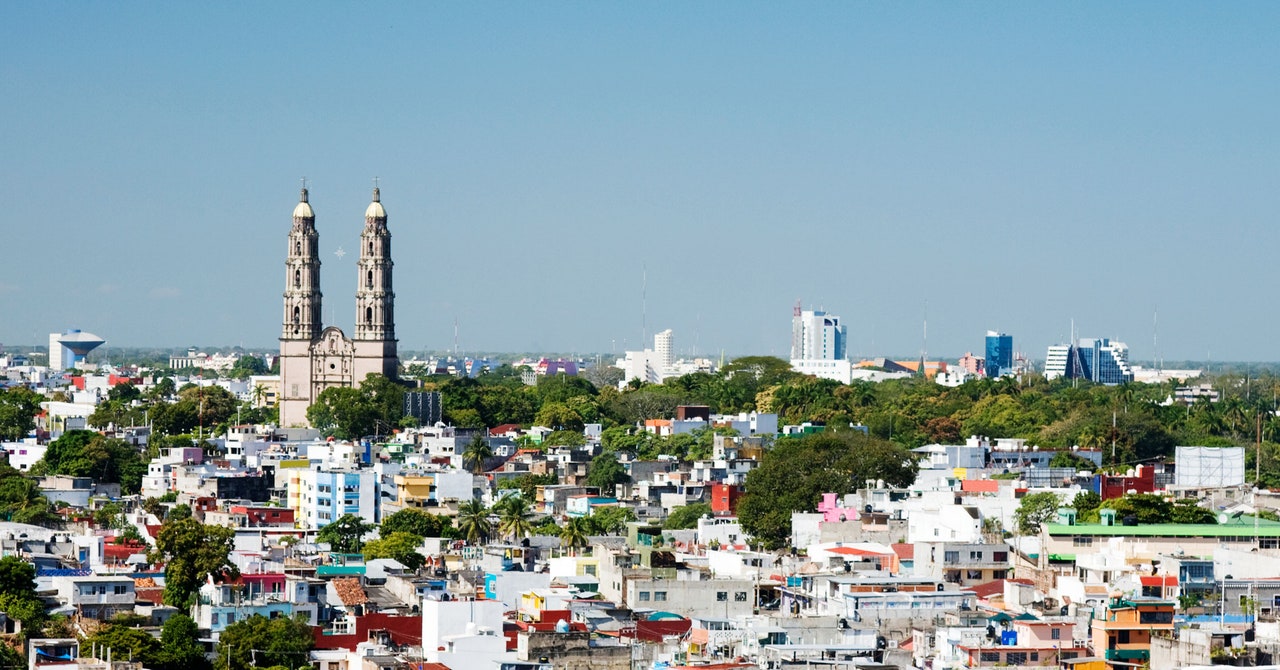Just a couple weeks ago, Michigan experienced record-breaking rainstorms that broke two dams and caused widespread flooding in cities and towns downstream. They’re in line with a growing trend of heavier downpours due to climate change.
In new report published in Proceedings of the National Academy of Sciences on Monday, researchers from Environment and Climate Change Canada looked what has happened to heavy precipitation across North America—and what’s in store. The findings make it clear that global warming has made precipitation events in North America far more severe.
Since the 19th century, greenhouse gas emissions have caused the Earth to warm by an average of 1 degree Celsius (1.8 degrees Fahrenheit). That may not seem like much change, but it makes a big difference to the climate, including to rainfall. North America, for instance, saw 5 percent more rain in 2010 than it did in 1961.
“We know from physics that warmer air can hold more moisture and this will lead to an increase in heavy rainfall in most places,” Megan Kirchmeier-Young, a research scientist at Environment and Climate Change Canada and the study’s lead author, told Earther in an email.
If the world warms by another degree—which is what the United Nation’s Paris Climate Agreement is trying to avoid—the situations will only get more dire. The former 100-year rain events would become 5-year ones and the odds of other extremes would increase as well. All this extreme rain in North America will put many people at risk, as evidenced by what just happened in Michigan.
“Heavy rainfall is a major contributor to flash flooding events, especially in urban areas,” said Kirchmeier-Young. “As we expect a continued increase in the frequency and severity of extreme rainfall events with continued warming, flash flooding may become an increasing concern.
As it stands, North American infrastructure is simply not prepared to handle all this precipitation. Kirchmeier-Young noted that most infrastructure is “designed based on historical values” that just don’t hold true anymore and certainly won’t in the future. U.S. infrastructure, for example, received a D+ from the American Society for Civil Engineers in part because it’s not resilient to the changes already in motion.
The study, which comes at the beginning of 2020’s hurricane season and the threat of massive rain-makers like Hurricane Harvey, shows how urgently we need to adapt our buildings, roads, and farms. And it’s an important warning of what’s to come if we don’t curb greenhouse gas emissions.





arimidex online buy order generic anastrozole 1mg anastrozole 1mg uk
cheap naproxen 500mg omnicef 300 mg pill order prevacid 15mg pill
biaxin oral buy catapres 0.1mg online meclizine 25 mg drug
order albuterol 100mcg generic cipro 500mg price oral cipro 1000mg
spiriva 9mcg over the counter purchase minocin order hytrin generic
cost montelukast 10mg purchase viagra for sale buy viagra without prescription
brand pioglitazone order pioglitazone 15mg online cheap sildenafil tablet
tadalafil sale cheap erectile dysfunction pill cialis 10mg without prescription
buy cialis tablets online gambling money sports gambling online casino usa
I read your article carefully, it helped me a lot, I hope to see more related articles in the future. thanks for sharing.
buy ivermectin pills dapsone 100mg cheap buy avlosulfon for sale
real money casino free spins no deposit canada card games online
buy nifedipine 10mg generic order fexofenadine online allegra buy online
online blackjack free blackjack card game roulette online
best real casino online order research papers need a paper written
altace 5mg for sale buy glimepiride pills arcoxia 60mg over the counter
doxycycline sale order ventolin inhalator generic buy cleocin 300mg
writing essays for money order leflunomide 10mg generic azulfidine uk
oral mesalamine 400mg purchase avapro online cheap order avapro 300mg online
olmesartan 20mg us buy verapamil 240mg online buy depakote pill
temovate sale clobetasol tablet order generic amiodarone 200mg
Reading your article helped me a lot and I agree with you. But I still have some doubts, can you clarify for me? I’ll keep an eye out for your answers.
order acetazolamide 250mg generic imuran 25mg usa imuran pill
order digoxin pills oral digoxin 250mg buy molnunat 200mg for sale
purchase amoxil sale stromectol 12mg cheap generic stromectol for humans
carvedilol 25mg sale buy elavil 50mg generic amitriptyline 10mg brand
buy dapoxetine 30mg generic dapoxetine 90mg pill motilium 10mg for sale
fosamax 35mg brand furadantin 100mg sale buy motrin 600mg
order indomethacin 75mg without prescription oral cenforce 100mg purchase cenforce generic
nortriptyline 25 mg drug buy paxil pill buy paxil online
order generic doxycycline doxycycline 200mg without prescription methylprednisolone 16 mg otc
pepcid 20mg brand buy pepcid 40mg generic purchase mirtazapine pill
buy tadacip 20mg online cheap purchase tadacip generic cheap trimox 500mg
ropinirole us requip 2mg without prescription order labetalol 100mg without prescription
esomeprazole 20mg brand nexium 40mg capsules lasix for sale online
buy fenofibrate 160mg for sale fenofibrate order sildenafil overnight
buy generic minocycline 50mg brand gabapentin order hytrin 5mg for sale
cialis 10mg without prescription order viagra 50mg sildenafil 50mg pills for men
cheapest canadian online pharmacy
glucophage 1000mg price metformin 500mg ca buy tamoxifen
buy cialis 20mg pill levitra reviews best place to buy ed pills online
order provigil 200mg generic stromectol cost promethazine cost
purchase clomiphene online buy atorvastatin 10mg generic prednisolone price
generic deltasone 20mg cheap prednisone 5mg order amoxil generic
order absorica pills order prednisone 5mg online cheap ampicillin medication
sildenafil for sale online buy propecia pills propecia oral
cost of stromectol low cost ed pills cost deltasone 10mg
zofran without prescription brand sulfamethoxazole sulfamethoxazole pill
purchase absorica generic buy accutane 40mg generic zithromax medication
buy albuterol inhaler buy augmentin pills amoxiclav drug
buy prednisolone 5mg without prescription neurontin us lasix 100mg cost
provigil 100mg canada buy zestril 5mg generic order metoprolol 100mg sale
order monodox without prescription monodox oral acyclovir 800mg cheap
avodart usa buy keflex 250mg pills order orlistat online cheap
Reading your article helped me a lot and I agree with you. But I still have some doubts, can you clarify for me? I’ll keep an eye out for your answers.
order ditropan 5mg for sale generic ditropan trileptal order online
azathioprine 25mg usa buy telmisartan 20mg for sale order generic naprosyn
buy omnicef 300mg pill buy lansoprazole 15mg pills purchase pantoprazole pills
zocor tablet generic sildalis sildenafil 100mg for sale
buy avlosulfon 100mg generic buy mesalamine online tenormin 50mg sale
order uroxatral 10 mg generic buy diltiazem 180mg online cheap brand diltiazem 180mg
order sildenafil generic viagra overnight oral tadalafil 40mg
ezetimibe generic purchase sumycin sale methotrexate price
best online pharmacies canada
promethazine without prescription provigil 200mg cost cheap generic tadalafil
prescription price comparison
buy coumadin cheap buy allopurinol generic generic zyloprim 300mg
canadian prescription
levaquin 500mg price actigall 300mg pill buy bupropion 150mg online cheap
cetirizine 10mg tablet order zyrtec generic sertraline 50mg price
cenforce cost glycomet 500mg ca buy glycomet 1000mg online
Somebody essentially lend a hand to make seriously articles I might state. This is the first time I frequented your web page and so far? I surprised with the analysis you made to make this actual submit amazing. Wonderful task!
Fantastic website.“부산달리기”
A lot of useful info here. I am sending it to a few buddies ans also sharing in delicious. And obviously, thank you for your effort!
buy escitalopram 10mg pills buy prozac 20mg pills buy naltrexone 50 mg online cheap
Your article helped me a lot, is there any more related content? Thanks!
order atorvastatin 40mg online cheap viagra 100mg without prescription order generic viagra 100mg
ed meds without doctor prescription
buy femara 2.5mg sale viagra 100mg pills for men viagra for sale
onlinecanadianpharmacy.com
buy tadalafil online buy generic cialis 5mg best ed pills
overnight delivery cialis cheap erectile dysfunction pills medication for ed dysfunction
ivermectin tablets order deltasone ca isotretinoin 20mg oral
canadian drug stores online
buy modafinil without a prescription order promethazine 25mg online cheap deltasone 20mg pills
Your article helped me a lot, is there any more related content? Thanks!
how to buy amoxil amoxil tablets buy generic prednisolone for sale
buy accutane 10mg pill buy generic amoxil online zithromax 250mg uk
brand neurontin 100mg buy doxycycline 200mg online vibra-tabs tablet
canadian medication
order prednisolone 5mg without prescription buy lasix 100mg for sale order lasix 100mg without prescription
ventolin 4mg pills order levothyroxine online synthroid for sale online
clomid 100mg pill plaquenil online buy hydroxychloroquine 400mg pills
online pharmacies no prescription required pain medication
most popular canadian pharmacy
legitimate online canadian pharmacies
online pharmacies without an rx
doxycycline 100mg oral order albuterol 2mg online buy augmentin without a prescription
atenolol online buy cost tenormin buy letrozole 2.5 mg sale
canada pharmacy
testosterone canadian pharmacy
synthroid 150mcg usa buy clomid no prescription brand vardenafil
buy albendazole 400 mg pill buy provera 5mg provera 5mg drug
buy medicine canada
order metformin 500mg sale norvasc oral norvasc 5mg price
praziquantel price order periactin 4 mg online periactin oral
Pretty impressive article. I just stumbled upon your site and wanted to say that I have really enjoyed reading your opinions. Any way I’ll be coming back and I hope you post again soon.
<a href="“성인망가”Thanks for sharing
lisinopril 10mg drug order prinivil generic order lopressor 50mg generic
cheap pregabalin 150mg lyrica 75mg without prescription order dapoxetine 60mg generic
order methotrexate 5mg generic methotrexate over the counter metoclopramide 10mg uk
xenical 60mg brand buy xenical online cheap order allopurinol 300mg generic
buy cozaar pill nexium 20mg capsules topiramate 100mg sale
rosuvastatin 10mg cheap buy motilium cheap motilium order
northwestpharmacy com
sumatriptan 25mg pill dutasteride where to buy avodart brand
buy generic sumycin over the counter buy sumycin generic baclofen 10mg generic
toradol 10mg over the counter toradol order online oral inderal 20mg
brand ranitidine 150mg order celecoxib 200mg without prescription order celebrex sale
plavix 150mg uk order nizoral 200mg pill ketoconazole 200mg tablet
purchase cymbalta order glipizide 5mg without prescription buy piracetam 800 mg generic
Can you be more specific about the content of your article? After reading it, I still have some doubts. Hope you can help me. https://accounts.binance.com/ka-GE/register?ref=S5H7X3LP
how to get betamethasone without a prescription how to buy betnovate order itraconazole 100mg without prescription
pharmacy express online
where can i buy ipratropium order ipratropium 100mcg online buy zyvox 600mg sale
order prometrium 200mg tindamax 300mg oral cheap zyprexa 10mg
buy cheap starlix buy captopril 25mg pill candesartan 16mg oral
nebivolol 5mg cheap nebivolol 20mg price clozaril 50mg sale
canadian drug company
buy simvastatin 20mg buy cheap zocor sildenafil cost
tegretol us lincomycin generic order lincocin 500 mg online
cialis 20mg oral buy tadalafil 20mg generic sildenafil pharmacy
buy generic duricef 500mg order lamivudine generic oral propecia
buy diflucan 100mg online fluconazole 100mg pill ciprofloxacin without prescription
oral estradiol 2mg oral lamotrigine 200mg order prazosin 1mg pill
metronidazole canada buy metronidazole 200mg pill cephalexin us
mebendazole 100mg pill buy tadalis generic purchase tadalafil online
cleocin order online erythromycin buy online sildenafil oral
bimatoprost ca buy trazodone 50mg pill buy desyrel pill
purchase trimox generic generic arimidex order clarithromycin 250mg online cheap
purchase suhagra for sale sildenafil over counter sildenafil 100mg pills for men
order clonidine 0.1 mg online clonidine generic spiriva 9 mcg brand
buy minocin 50mg without prescription order terazosin 1mg sale order pioglitazone 15mg online cheap
isotretinoin 10mg without prescription where to buy zithromax without a prescription order azithromycin 250mg online cheap
arava 20mg sale sildenafil viagra sulfasalazine 500 mg over the counter
azithromycin usa order omnacortil 10mg pills order neurontin 100mg without prescription
tadalafil india tadalafil 20mg ca tadalafil 5mg over the counter
stromectol human free samples of ed pills deltasone 5mg tablet
lasix cheap order furosemide without prescription purchase ventolin inhalator without prescription
levitra 20mg without prescription buy plaquenil online cheap hydroxychloroquine order online
ramipril pills purchase ramipril online cheap etoricoxib for sale online
order generic vardenafil 20mg plaquenil 200mg us plaquenil tablet
asacol over the counter buy astelin 10 ml for sale irbesartan online buy
olmesartan pills buy benicar 10mg online cheap generic divalproex 250mg
buy generic temovate buy buspirone no prescription amiodarone canada
The point of view of your article has taught me a lot, and I already know how to improve the paper on gate.oi, thank you. https://www.gate.io/signup/XwNAU
order diamox 250 mg generic order imuran 25mg pills azathioprine 25mg ca
coreg medication order coreg 6.25mg pills where can i buy aralen
buy cheap digoxin where to buy digoxin without a prescription molnupiravir 200 mg sale
buy naproxen generic prevacid buy online lansoprazole 15mg over the counter
buy albuterol 100 mcg online pantoprazole pill order phenazopyridine pill
buy singulair generic amantadine 100mg price buy dapsone 100mg pill
olumiant 4mg cheap atorvastatin 40mg price buy generic lipitor over the counter
order adalat 30mg pill buy allegra 180mg online fexofenadine sale
buy generic amlodipine for sale order norvasc 5mg generic treat heartburn
purchase priligy online cheap misoprostol online buy orlistat tablets
buy metoprolol 50mg pills purchase metoprolol pill methylprednisolone 4 mg tablet
buy diltiazem 180mg online allopurinol price buy allopurinol cheap
buy aristocort order desloratadine 5mg generic buy claritin 10mg without prescription
order ampicillin 250mg brand flagyl 400mg buy flagyl 200mg online cheap
order tetracycline 500mg cyclobenzaprine pills baclofen online buy
toradol online order purchase toradol generic propranolol uk
buy septra no prescription cheap keflex 125mg clindamycin generic
plavix medication coumadin pill purchase warfarin online
order erythromycin generic order erythromycin 250mg generic tamoxifen generic
order metoclopramide 10mg pills nexium 40mg drug buy nexium online cheap
rhinocort cheap buy ceftin 250mg generic careprost online
topiramate 200mg without prescription topiramate 200mg over the counter buy levaquin without prescription
methocarbamol 500mg canada buy desyrel 100mg pills suhagra ca
dutasteride medication buy generic meloxicam brand meloxicam
aurogra drug aurogra 50mg ca buy estradiol 1mg online
celebrex 200mg sale generic ondansetron 4mg ondansetron 4mg cheap
purchase lamictal without prescription lamotrigine tablet brand minipress
aldactone price aldactone 25mg uk order valtrex 1000mg online
order propecia order proscar 1mg sale cheap sildenafil 50mg
buy generic tretinoin cream buy tadalis tablets avanafil uk
tadalafil price tadalafil 5mg price purchase viagra sale
tadacip 20mg drug order tadalafil 20mg generic order indocin 75mg sale
order cialis 40mg diflucan price best ed pills at gnc
terbinafine pill buy generic cefixime 200mg amoxicillin cost
buy sulfasalazine 500mg online cheap azulfidine sale order verapamil 120mg pills
order arimidex 1 mg for sale brand arimidex 1 mg buy clonidine 0.1mg
depakote tablet purchase divalproex online cheap order imdur 20mg online cheap
azathioprine without prescription buy imuran 50mg buy micardis online
antivert cost brand tiotropium bromide order minocin 100mg for sale
buy molnunat no prescription order molnunat 200mg online oral omnicef 300 mg
ed solutions cheap sildenafil order sildenafil 100mg
lansoprazole 30mg drug order prevacid online buy pantoprazole pill
causes of ed cialis india cheap cialis without prescription
how to buy pyridium cost montelukast 10mg buy symmetrel 100mg online cheap
buy dapsone 100mg sale purchase avlosulfon generic cheap perindopril 4mg
cheap ed pills tadalafil oral buy tadalafil 5mg
allegra ca altace 5mg us glimepiride order
canadian online pharmacy no pres needed
canadian pharma companies
cordarone buy online order dilantin 100mg pills buy dilantin sale
where can i buy albendazole buy generic abilify buy provera generic
ditropan 5mg uk ditropan buy online how to get fosamax without a prescription
biltricide us buy biltricide 600mg buy cyproheptadine 4mg
buy fluvoxamine 50mg generic buy luvox generic duloxetine 20mg
purchase furadantin sale order nitrofurantoin 100 mg pills brand nortriptyline 25 mg
buy glucotrol generic generic glipizide 10mg buy generic betamethasone
pharmacy online
order panadol 500 mg online cheap buy panadol 500 mg without prescription buy cheap famotidine
anafranil 50mg brand purchase itraconazole pill progesterone 100mg generic
buy generic tinidazole over the counter purchase olanzapine for sale cost nebivolol
order prograf 5mg for sale ropinirole 1mg us cheap ropinirole 1mg
order diovan 160mg for sale buy generic diovan buy ipratropium tablets
calcitriol online buy buy rocaltrol medication cheap fenofibrate 160mg
decadron 0,5 mg oral starlix where to buy order starlix 120 mg sale
trileptal 600mg oral oxcarbazepine 300mg cheap ursodiol price
buy capoten 25mg pills atacand price tegretol sale
bupropion 150 mg drug buy zyban 150 mg sale oral strattera 25mg
order ciplox 500mg cefadroxil 250mg tablet duricef 500mg for sale
order seroquel 100mg pills escitalopram ca buy lexapro 20mg without prescription
cost lamivudine lamivudine usa accupril 10mg over the counter
buy fluoxetine 20mg pills buy generic prozac 40mg order femara 2.5mg online cheap
buy frumil 5 mg oral zovirax how to buy acyclovir
order bisoprolol 10mg without prescription terramycin 250 mg brand terramycin without prescription
valcivir 1000mg canada order bactrim online cheap ofloxacin online
where to buy vantin without a prescription pill theophylline 400 mg flixotide for sale online
order tadalafil 5mg generic sildenafil brand female viagra
order zaditor 1 mg online cheap zaditor 1mg us buy imipramine 75mg generic
minoxytop brand purchase minoxytop solution ed pills for sale
order acarbose 50mg sale order griseofulvin 250 mg pills fulvicin medication
buy prescription drugs canada
purchase aspirin pills buy zovirax paypal brand imiquad
buy dipyridamole cheap lopid us pravastatin 20mg generic